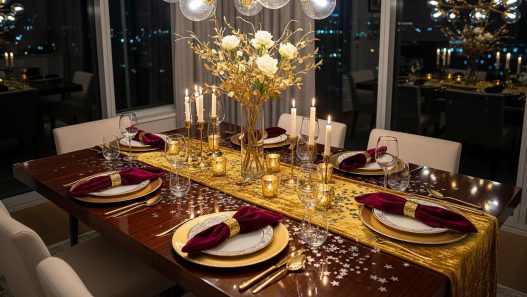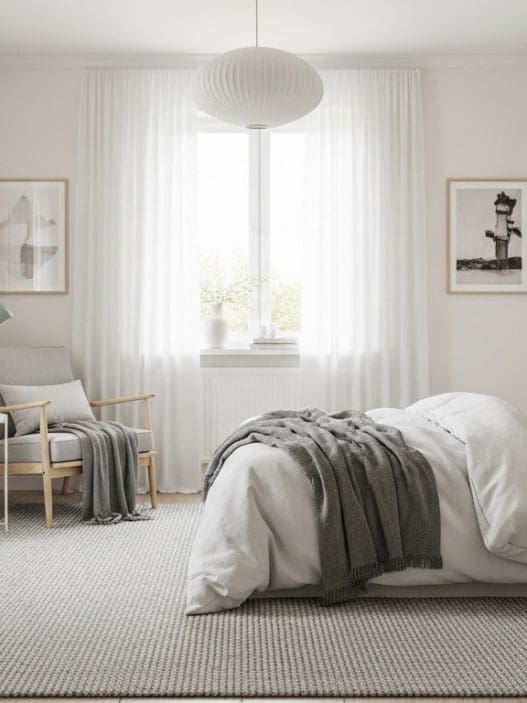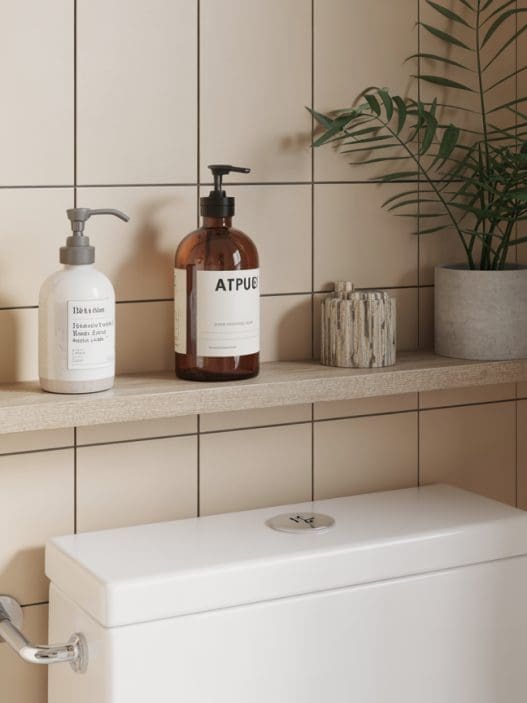Designing a coastal casual living room is about creating a space that feels relaxed, fresh, and connected to the natural beauty of seaside living. Whether you live near the coast or just want to bring that breezy atmosphere into your home, the goal is comfort without clutter, with materials and colors inspired by the shore. This decorating style favors light tones, natural textures, and a laid-back charm that makes every guest feel at home.
In this guide, we will share 20 practical and achievable ideas to help you design a coastal casual living room. Each idea is beginner-friendly and rooted in design principles that make sense, such as color psychology, balance, and texture. We aim to help you build a space that feels open, airy, and grounded in coastal calm, even if you’re miles from the ocean.
1. Start with a Soft Neutral Base in a Coastal Casual Living Room
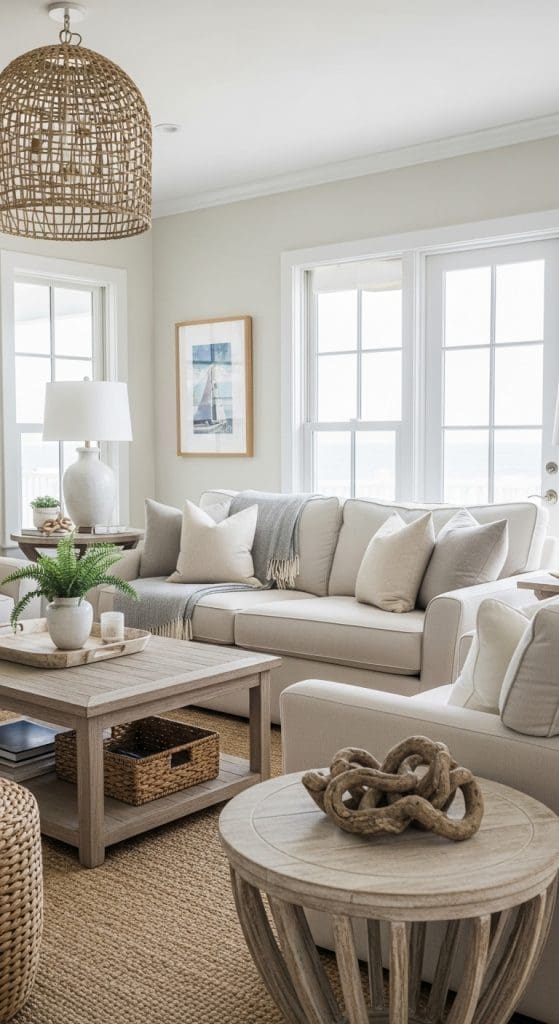
We recommend beginning your coastal casual living room with a soft neutral palette as the foundation. Shades like sand, ivory, warm white, and driftwood grey help reflect light and create a sense of openness. These tones mimic the colors of the coast and allow the eye to rest, which aligns with design psychology suggesting that neutral backdrops reduce visual stress and support relaxation.
2. Use Natural Fiber Rugs in a Coastal Casual Living Room
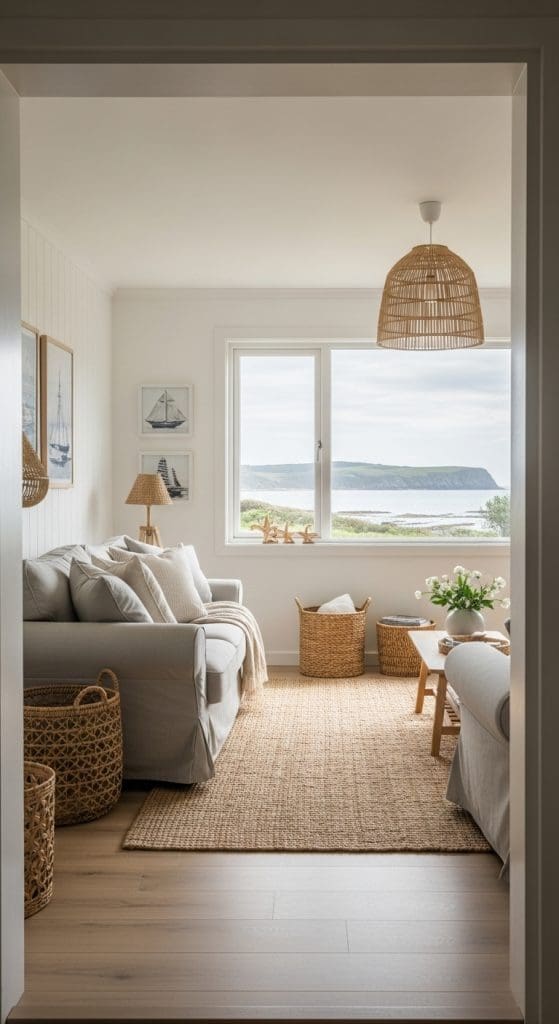
Natural fiber rugs such as jute or sisal provide earthy texture and are ideal for a coastal casual living room. These materials are durable, grounding, and resemble the rugged beauty of beach grasses. We suggest this because natural textures activate a sensory connection with nature, which has been shown to reduce anxiety and enhance mood in home environments.
3. Choose Oversized Slipcovered Seating
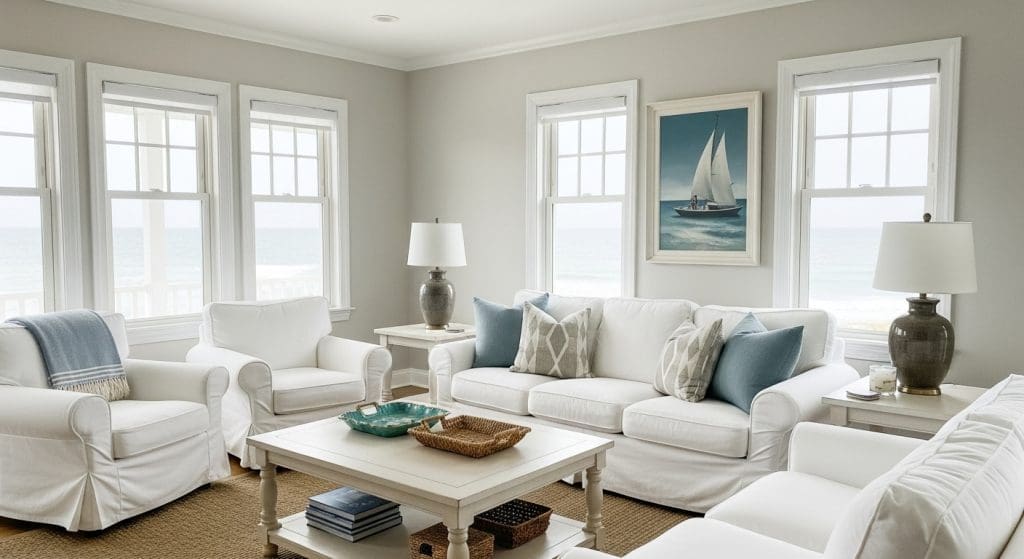
We suggest using large, slipcovered sofas or armchairs in white or cream for both comfort and practicality. Slipcovers are easy to wash and contribute to the relaxed feel of a coastal casual living room. According to ergonomic design studies, deep, cushioned seating improves physical ease and invites longer social interaction, which enhances the room’s function as a gathering space.
4. Layer with Light Cotton and Linen Textiles
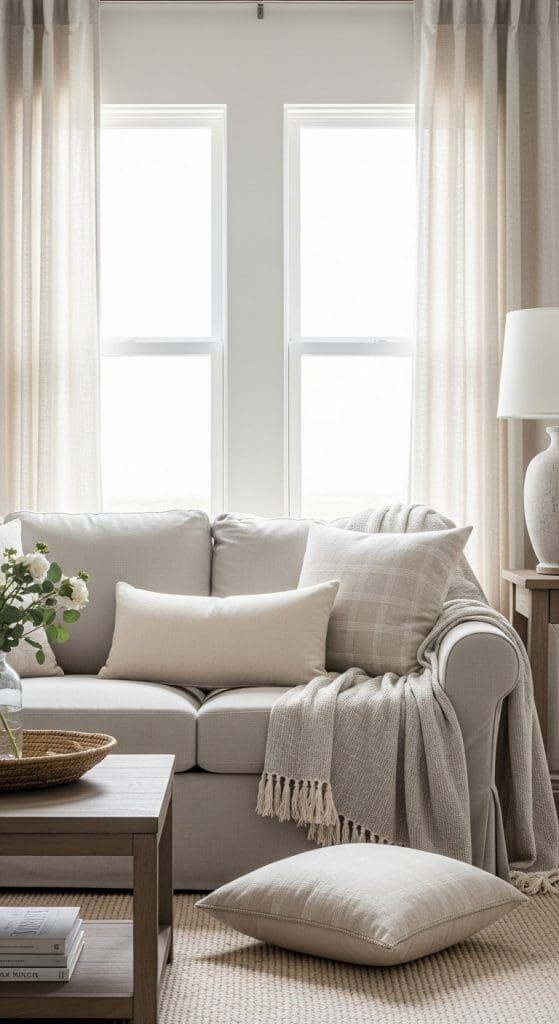
Incorporate throw pillows, curtains, and blankets made from lightweight cotton or linen to create soft movement and visual flow. These breathable fabrics mimic the breezy nature of seaside air and help regulate temperature. From a sensory standpoint, these textures are soothing and tactile, which makes the space feel more livable and less staged.
5. Add Weathered Wood Accents in a Coastal Casual Living Room
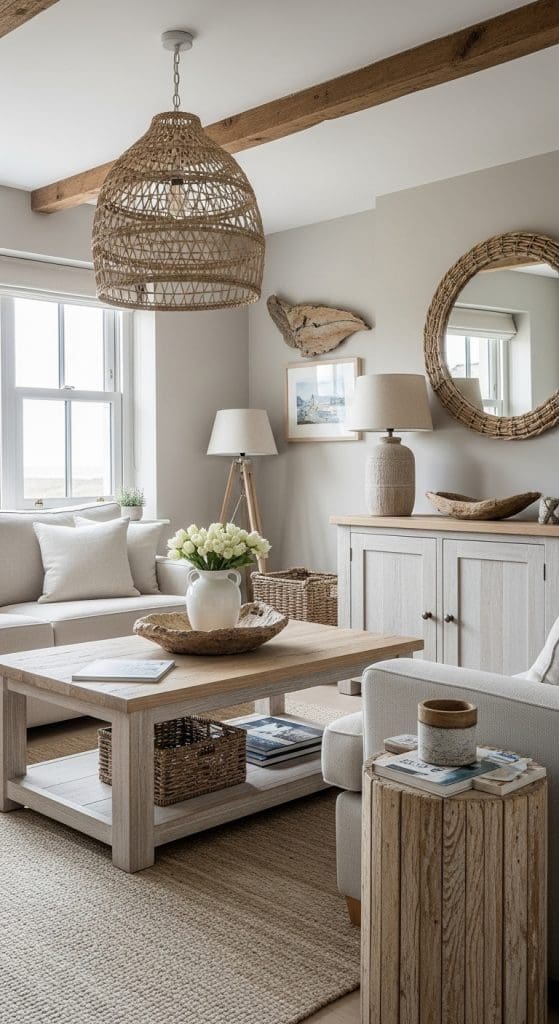
We recommend integrating driftwood, reclaimed oak, or whitewashed pine furniture to bring in weathered wood textures. These elements add visual warmth and echo the look of sun-bleached coastal landscapes. The use of worn wood supports biophilic design principles, which state that natural, imperfect materials make interior spaces feel more authentic and restorative.
6. Bring in Coastal-Inspired Artwork

Use framed prints or paintings that reflect marine life, boats, beaches, or soft blue landscapes to establish a coastal theme. Art has been shown to influence mood, and scenes associated with water tend to promote calmness and creativity. In a coastal casual living room, this type of art connects the visual narrative of the space to the inspiration behind it.
7. Stick to a Soft Blue and Seafoam Palette
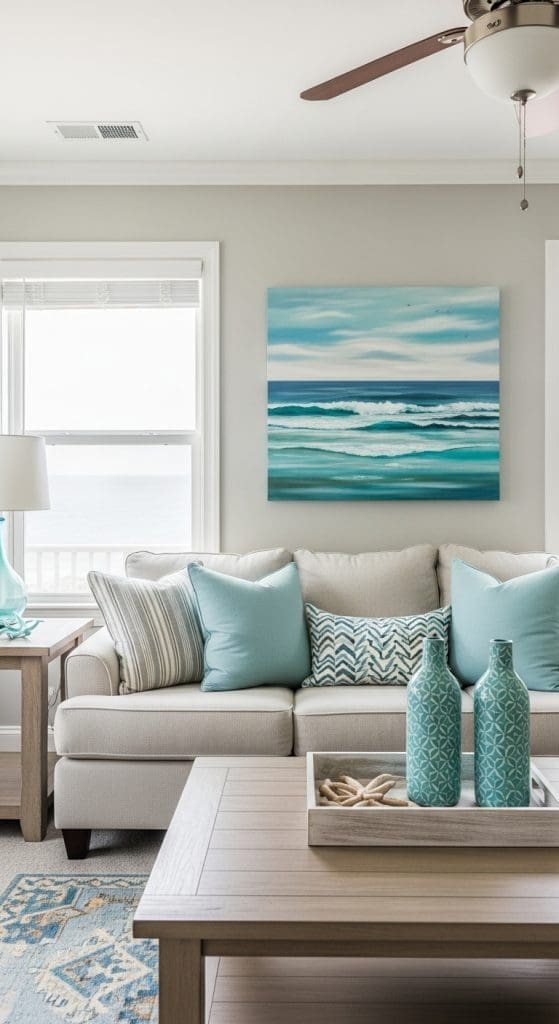
Accent your space with shades of soft blue, aqua, and muted green to evoke the ocean and sky. These colors are widely recognized in color psychology as calming and mentally refreshing. When used sparingly, they reinforce the coastal casual style without overwhelming the senses, maintaining balance and cohesion.
8. Use Woven Baskets for Storage in a Coastal Casual Living Room

We suggest using handwoven baskets made of seagrass, rattan, or cane for functional yet decorative storage. These baskets add texture and serve as a reminder of beachside craftsmanship. From an organizational perspective, they help reduce visible clutter, which supports mental clarity and enhances the room’s tranquil feel.
9. Include White or Light-Washed Shiplap
Shiplap walls painted white or pale grey are a hallmark of coastal casual interiors. The horizontal lines draw the eye around the room and add subtle interest without busy patterns. Architectural studies suggest that this type of wall treatment adds perceived depth and texture, which makes small spaces feel larger and more layered.
10. Let in Natural Light

Maximize natural light by keeping windows uncovered or using sheer curtains. Bright, sunlit rooms boost serotonin levels and visually expand the space. In coastal casual living rooms, natural light enhances the airy feel and complements the light color palette, making the room feel warm and inviting all day.
11. Keep Décor Minimal and Intentional
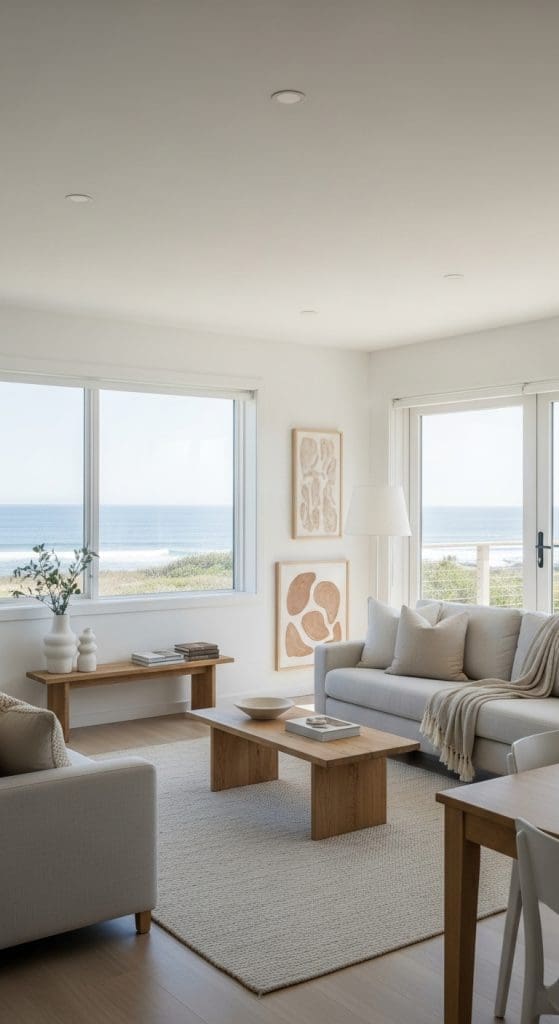
We recommend limiting decorative items to a few meaningful or textural pieces. Overcrowding shelves or tabletops can disrupt the relaxed flow of a coastal casual living room. According to principles of minimalist design, fewer visual elements help reduce cognitive load and create a sense of spaciousness.
12. Choose Rattan or Cane Furniture Pieces
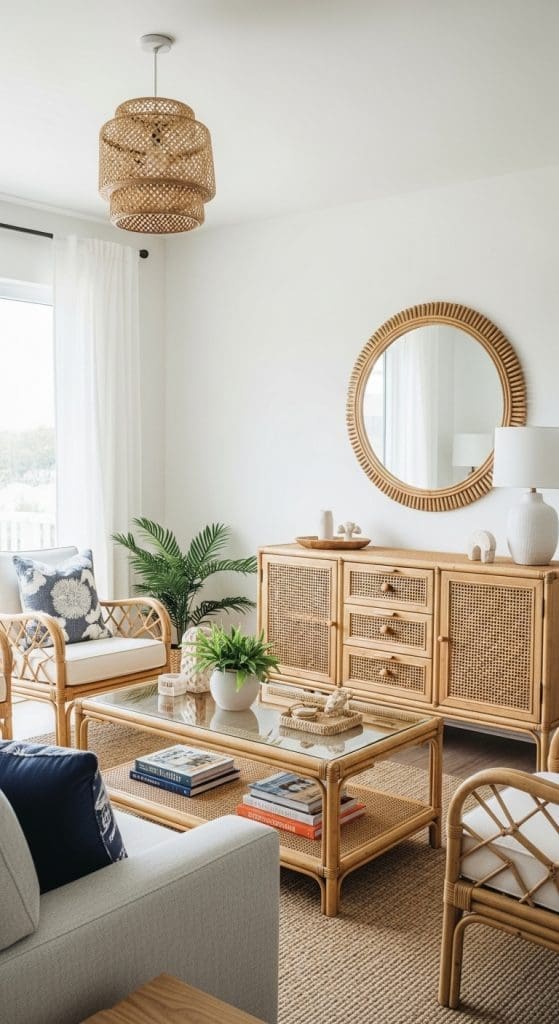
Accent chairs, coffee tables, or sideboards with rattan or cane bring an easy, sun-kissed charm into the room. These materials are lightweight, breathable, and commonly used in beachside resorts. Their open-weave structure allows light to pass through, which keeps the room from feeling visually heavy.
13. Add Coastal Scented Candles or Diffusers
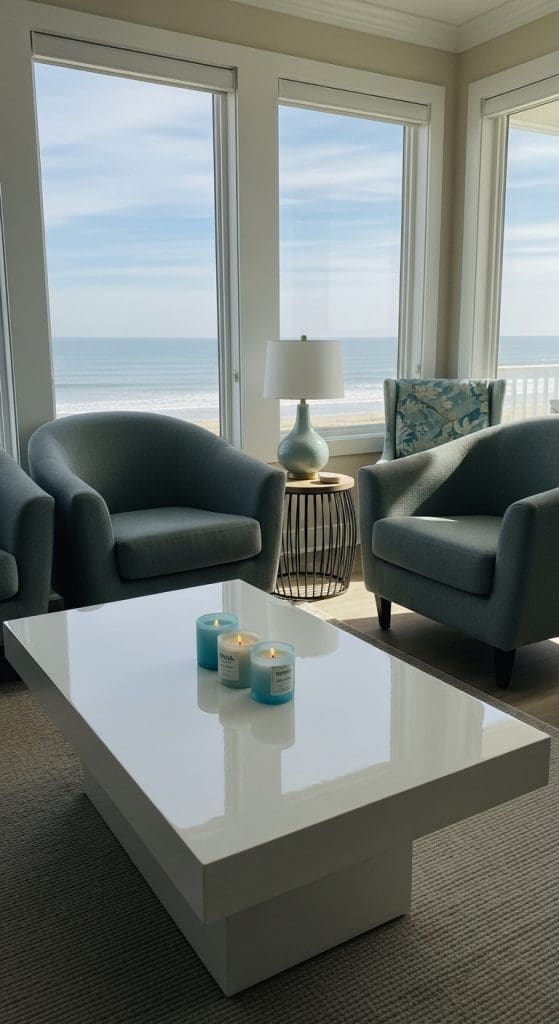
Scent plays a powerful role in how we experience space. We suggest using candles or oil diffusers with notes of sea salt, eucalyptus, or citrus to subtly enhance the coastal atmosphere. Aromachology research shows that specific scents can trigger relaxation, making your coastal casual living room feel even more immersive.
14. Style with Driftwood or Coral Accents in a Coastal Casual Living Room

Use responsibly sourced decorative driftwood, coral replicas, or shells to add sculptural, organic interest. These items create focal points without feeling too polished. Because they mimic forms found in nature, they align with biophilic design principles that support emotional well-being in interior spaces.
15. Incorporate Light, Airy Window Treatments
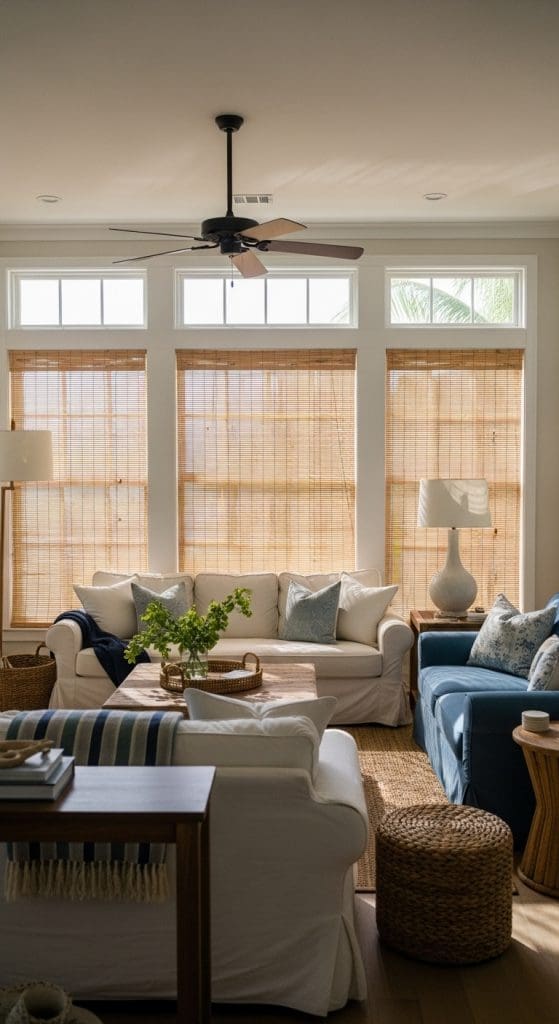
Avoid heavy drapes or dark blinds. Instead, we recommend sheer panels, Roman shades in soft hues, or bamboo blinds that filter sunlight gently. These materials maintain privacy while preserving brightness, helping your coastal casual living room remain both functional and serene.
16. Paint with Matte or Eggshell Finishes
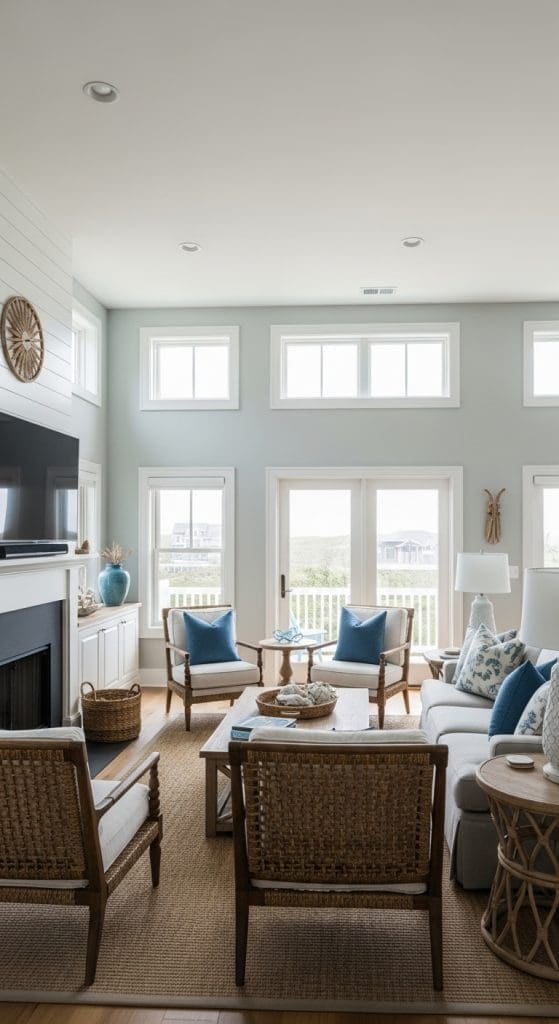
Choose paint finishes with a matte or eggshell sheen to prevent glare and add softness to walls. These finishes absorb more light than gloss, reducing visual distractions and enhancing calmness. This is particularly effective in coastal casual rooms where diffused light and understated surfaces are key to the aesthetic.
17. Use Light-Colored Flooring in a Coastal Casual Living Room

Opt for white oak, bleached pine, or pale laminate flooring to support the airy feel. Lighter floors reflect more light and prevent the room from feeling grounded or overly rustic. Flooring is a major visual element, and choosing the right tone can amplify the relaxed feel central to coastal casual design.
18. Mix Old and New for Timeless Appeal
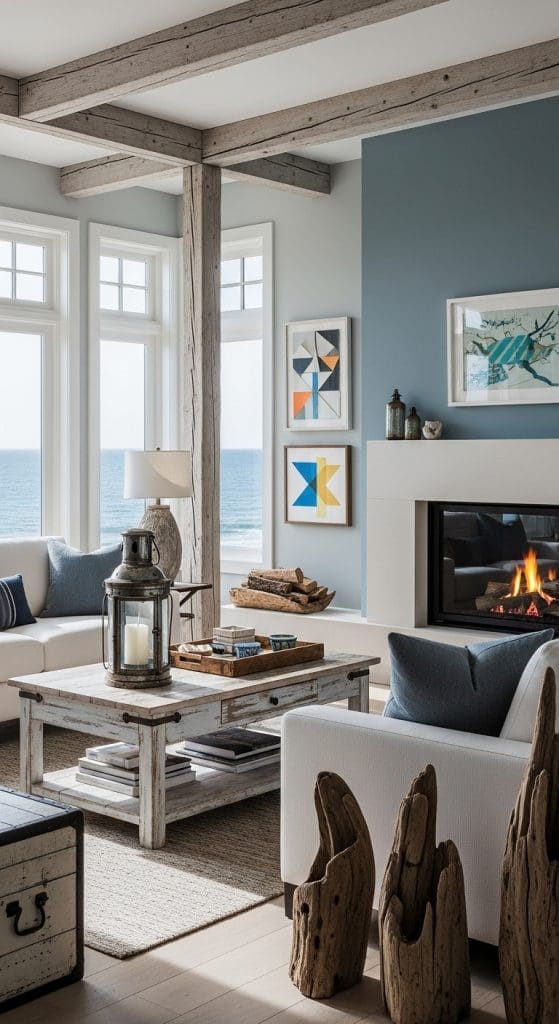
We recommend blending vintage finds with new pieces to give your coastal casual living room a timeless, lived-in feel. This approach helps create visual depth and character. From a psychological standpoint, mixing eras creates familiarity and comfort, making the room feel personal and not overly styled.
19. Display Books and Objects with a Coastal
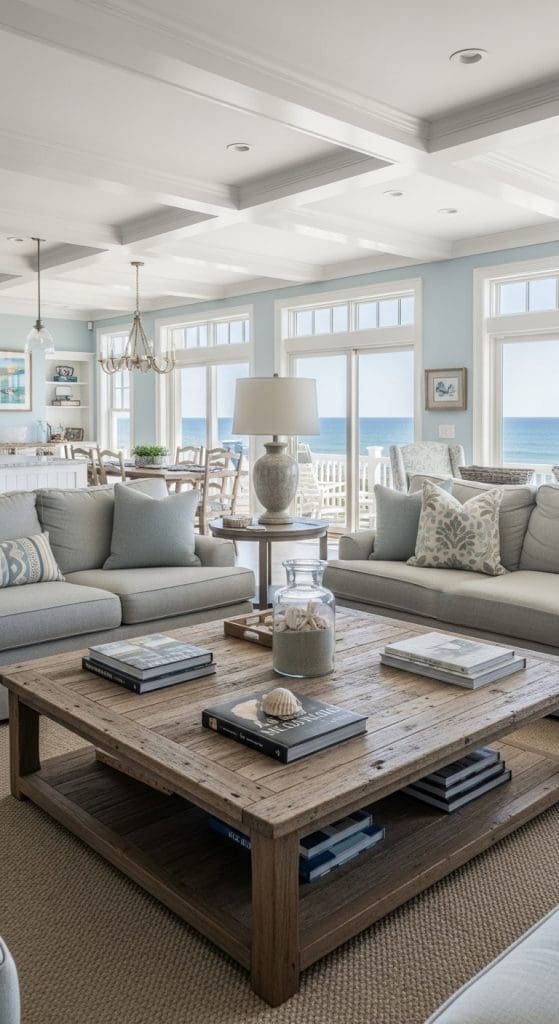
Curate a few coffee table books, beach-themed trinkets, or framed quotes related to the sea to reinforce your theme without excess. These items serve as conversation starters and subtly guide the mood of the room. Intentional theming keeps the design cohesive while avoiding visual clutter.
20. Embrace Imperfection and Comfort

Most importantly, we recommend prioritizing comfort and imperfection over design perfection. Use lived-in textures, wrinkled linen, and cozy nooks to make the space feel truly relaxing. The casual side of coastal design embraces effortlessness, which psychological studies show increases emotional connection to a space and reduces stress.









